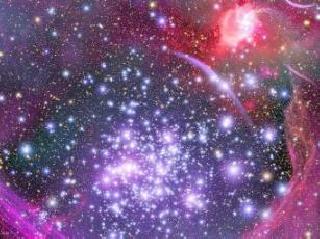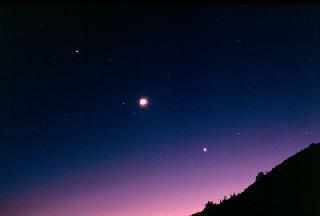
An artist's impression of the Milky Way galaxy. A NASA photo
WASHINGTON (PTI): Thousands of rogue alien planets may be rambling through space in our Milky Way galaxy instead of being locked in orbit around a star, says a new study.
According to researchers at the Kavli Institute for Particle Astrophysics and Cosmology (KIPAC), an independent laboratory of Stanford University, these "nomad planets" could be surprisingly common in our bustling galaxy.
And they predict that there may be 100,000 times more of these wandering, homeless planets than stars in the Milky Way.
If this is the case, these intriguing cosmic bodies would belong to a whole new class of alien worlds, shaking up existing theories of planet formation, and may also raise new and tantalizing questions in the search for life beyond Earth, the researchers said.
"If any of these nomad planets are big enough to have a thick atmosphere, they could have trapped enough heat for bacterial life to exist," study leader Louis Strigari was quoted as saying by SPACE.com.
And while nomad planets cannot benefit from the heat given off from their parent stars, these worlds could generate heat from tectonic activity or internal radioactive decay, the researchers said.
For now, characteristics of these foreign objects are still unknown; they could be icy bodies, similar to other objects found in the outer solar system, rocky like asteroids, or gas giants similar to the most massive planets in our solar system.
Over the past several decades, astronomers have keenly hunted for planets outside our solar system. So far, the search has turned up more than 700 of these exoplanets.
Almost all of these newfound worlds orbit stars, but last year, scientists found about a dozen planets with no discernible host star.
The researchers, who detailed the study in the Monthly Notices of the Royal Astronomical Society, used a technique called gravitational microlensing to detect these homeless and free-flying planets. The method examines the effects of a massive object passing in front of a star.
Based on initial estimates, approximately two free-flying planets exist for every "normal" star in our galaxy, but the results of the new study produced even more staggering findings: nomad planets may be up to 50,000 times more common than that.
The researchers are hopeful that follow-up observations using next generation telescopes, particularly of the smaller objects, will yield more detailed results. If the estimated number of these nomad planets is correct, the results could lead to exciting prospects about the origin and abundance of life in our Milky Way galaxy, they said.
For instance, as these homeless planets mosey through space, collisions could break apart pieces of these rogue worlds and fling bacterial life onto other celestial bodies, the researchers said.
"Few areas of science have excited as much popular and professional interest in recent times as the prevalence of life in the Universe," co-author Roger Blandford, director of KIPAC, said.
"What is wonderful is that we can now start to address this question quantitatively by seeking more of these erstwhile planets and asteroids wandering through interstellar space, and then speculate about hitchhiking bugs."
 Previous Article
Previous Article Next Article
Next Article













The Indian Air Force, in its flight trials evaluation report submitted before the Defence Ministry l..
view articleAn insight into the Medium Multi-Role Combat Aircraft competition...
view articleSky enthusiasts can now spot the International Space Station (ISS) commanded by Indian-American astr..
view article